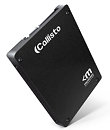- Joined
- Oct 9, 2007
- Messages
- 47,243 (7.55/day)
- Location
- Hyderabad, India
| System Name | RBMK-1000 |
|---|---|
| Processor | AMD Ryzen 7 5700G |
| Motherboard | ASUS ROG Strix B450-E Gaming |
| Cooling | DeepCool Gammax L240 V2 |
| Memory | 2x 8GB G.Skill Sniper X |
| Video Card(s) | Palit GeForce RTX 2080 SUPER GameRock |
| Storage | Western Digital Black NVMe 512GB |
| Display(s) | BenQ 1440p 60 Hz 27-inch |
| Case | Corsair Carbide 100R |
| Audio Device(s) | ASUS SupremeFX S1220A |
| Power Supply | Cooler Master MWE Gold 650W |
| Mouse | ASUS ROG Strix Impact |
| Keyboard | Gamdias Hermes E2 |
| Software | Windows 11 Pro |
The Solid State Drive (SSD) market is one of the most exciting and fastest-growing segments in computer components today, and for good reason. SSDs offer a host of advantages over traditional platter-based Hard Disk Drives, with many of these advantages already known to seasoned computer enthusiasts.
Mushkin, Inc. has been very eager to release SSDs with the best specifications and quality control standards that exist. Our "Io" and "Callisto deluxe" SSD series have been enjoyed and recognized the world over by end users and enthusiasts alike. However, as the SSD segment continues to grow and manufacturers adapt to the latest technologies, some irregularities and performance issues have arisen.

NAND manufacturers are currently undergoing a shift in the die size of their chips. To remain as competitive as possible, manufacturers continually strive to shrink their process technology. 2008 saw the dominance of 50nm Nodes; during 2009-10, 34nm became the most widespread die. Today, manufacture is shifting to 25nm die.
While the process reduction to 25nm reduces cost both for manufacturers and consumers, there are intrinsic drawbacks to the 25nm which give rise to problems that have not yet been solved. Because of the manner in which 25nm NAND chips interact with controllers, capacity is noticeably reduced. In addition, 25nm chips have far fewer available program erase cycles, thereby reducing endurance of SSDs with 25nm NAND.
We here at Mushkin, Inc. have always strived to deliver the best hardware that has gone through the most strenuous quality control process. We feel that consumers will not yet enjoy the benefits of 25nm Flash memory because of the capacity-reduction issues involved. We will continue to provide SSDs utilizing 34nm Flash memory chips to ensure that our customers get the quality product they're expecting and what they very well may have ordered before. As soon as we are convinced of the effectiveness of 25nm Flash memory, we will release products that meet our standards which are accurately described as being different than their 34nm counterparts.
View at TechPowerUp Main Site
Mushkin, Inc. has been very eager to release SSDs with the best specifications and quality control standards that exist. Our "Io" and "Callisto deluxe" SSD series have been enjoyed and recognized the world over by end users and enthusiasts alike. However, as the SSD segment continues to grow and manufacturers adapt to the latest technologies, some irregularities and performance issues have arisen.

NAND manufacturers are currently undergoing a shift in the die size of their chips. To remain as competitive as possible, manufacturers continually strive to shrink their process technology. 2008 saw the dominance of 50nm Nodes; during 2009-10, 34nm became the most widespread die. Today, manufacture is shifting to 25nm die.
While the process reduction to 25nm reduces cost both for manufacturers and consumers, there are intrinsic drawbacks to the 25nm which give rise to problems that have not yet been solved. Because of the manner in which 25nm NAND chips interact with controllers, capacity is noticeably reduced. In addition, 25nm chips have far fewer available program erase cycles, thereby reducing endurance of SSDs with 25nm NAND.
We here at Mushkin, Inc. have always strived to deliver the best hardware that has gone through the most strenuous quality control process. We feel that consumers will not yet enjoy the benefits of 25nm Flash memory because of the capacity-reduction issues involved. We will continue to provide SSDs utilizing 34nm Flash memory chips to ensure that our customers get the quality product they're expecting and what they very well may have ordered before. As soon as we are convinced of the effectiveness of 25nm Flash memory, we will release products that meet our standards which are accurately described as being different than their 34nm counterparts.
View at TechPowerUp Main Site


